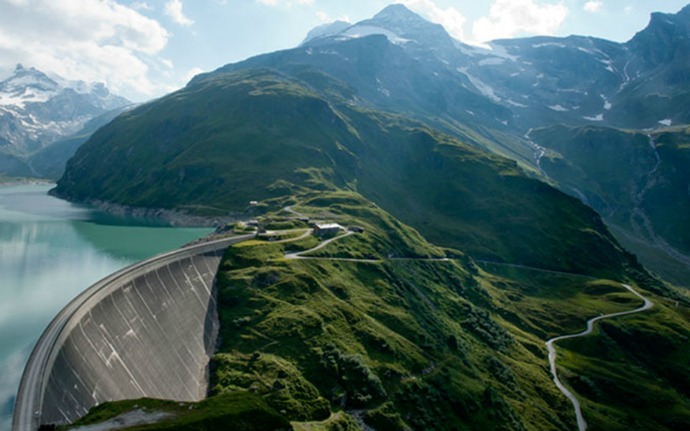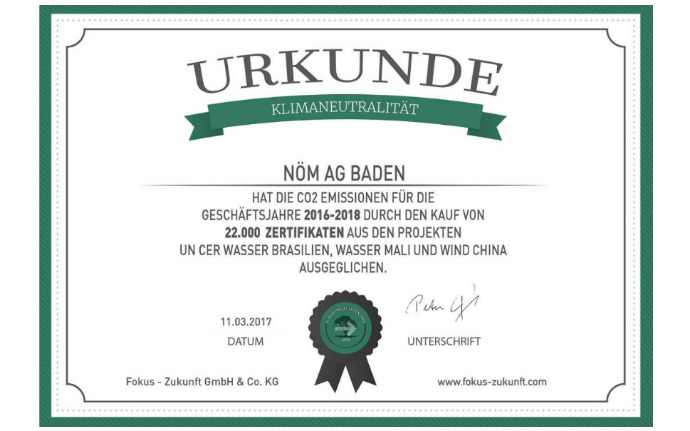Carbon Footprint

We feel responsible for the world which we leave our children and grandchildren. Therefore, we have been systematically implementing measures to reduce our carbon footprint for some years. As the first dairy in Austria we have been working carbon –neutral since January 1, 2016. Together with our colleagues, customers and energy providers we have modified our use of energy and ressources. In doing so we are contributing to achieve climate objectives - In Austria, Europe and around the world.

How it works:
The manufacture of refined dairy products requires energy. Gas for thermal energy and electricity for refrigeration plants, compressed-air systems as well as electrical systems. As a result of a series of measures we have been reducing our carbo-dioxide- emissions succesfully. Moreover, we use green electricity from Austrian hydroelectric power plants as well as environmentally friendly gas. We are currently releasing 3.277 tonnes carbo-dioxide only, per year. Those released carbo-dioxides are being neutralised by supporting specific international UN climate protection projects in Brasil, Mali and China.

We are proud that NÖM could make a significant contribution to achieve austrian climate objectives due to energy savings and, therefore, the recovery of industrial heat. In the context of the climate active programme “energy-efficient manufacturings“ NÖM received the award for “expertise in climate protection“ by the Federal Ministry of Agriculture, Forestry, Environment and Water Management.
Investment in the future
To reduce CO2 emissions, NÖM has invested a total of EUR 15.5 million in measures such as the expansion and modernization of its facilities in Baden in recent years. "As an innovative, modern and future-oriented company, we work in an energy-efficient and environmentally friendly manner," says Ing. Josef Simon, CEO of NÖM AG: "This is how we have been able to significantly improve our energy balance in recent years. We have fundamentally changed our approach to energy and other resources in the enterprise. "
Less CO2
Thanks to sustainable technologies and increased energy efficiency, NÖM was able to reduce its carbon footprint to around 3,277 tonnes a year. "Since 2010, we work in many parts of the operation with heat recovery: waste heat from refrigeration, compressed air and cleaning systems are used for heating, hot water, for space heating and for pre-heating with individual production steps. This significantly reduces our energy requirements, "says DI Gerhard Bartak, responsible project manager for energy at NÖM AG.
In addition, the refrigeration system and the compressed air system have been optimized, and fuel consumption has been reduced thanks to new steam boiler technology. Step by step, all luminaires are converted to LEDs. Since 2015, NÖM AG has relied on green electricity from 100 percent Austrian hydroelectric power and, since 2017, environmentally friendly natural gas.
Since 2016, the NÖM dairy has been working from one location. "Concentrating on a location is crucial for our future. Thanks to lower production costs, we will remain competitive over the long term, "the management board members Berger and Simon agree.

Balancing through climate protection projects In order to compensate for the remaining CO2 emissions, NÖM AG supports international UN climate protection projects. For the period 2016-2018, the remaining emissions have already been compensated with the support of climate protection projects in Brazil, Mali and China. They have been selected according to ecological and social criteria and are used to generate electricity from water or wind power.
About climate protection, CO2 emissions, CO2 footprint and CO2 compensation In December 2015, 195 states agreed on a legally binding global climate change agreement for the first time at the Paris Climate Change Conference. It was agreed to limit the rise in the global average temperature to 1.5 degrees Celsius. This must u.a. emissions of greenhouse gases are reduced rapidly and significantly. Lt. Kyoto Protocol, there are seven major propellant gases that are responsible for climate change. Not all of them have the same climate-damaging effect. In order to be able to compare the emissions, all greenhouse gases are converted into CO2 (CO2 equivalents) and emissions are quoted in CO2. The carbon footprint is a measure of the amount of greenhouse gases directly or indirectly produced by individuals, businesses and organizations. Because the greenhouse effect is a global phenomenon, it is possible to compensate for unavoidable emissions. Therefore, emissions that are unavoidable in one location can be saved or stored elsewhere. Those who do not release greenhouse gases or completely offset emissions are CO2-neutral.